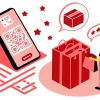
Tackling Common Hospital Facility Issues: How QR-Based Solutions Can Help?
Hospitals face challenges daily, from maintaining equipment to managing patient flow. QR-based solutions offer a modern way to address these common hospital facility issues, enhancing efficiency and care.
Common Hospital Facility Issues
Hospitals are complex ecosystems where multiple operations need to function seamlessly. However, common hospital facility issues can disrupt these operations, impacting patient care and overall efficiency.
These issues range from equipment failures and lost medical records to inefficient inventory management and inadequate sanitation protocols. Each of these problems can cause delays, increase costs, and even pose risks to patient safety.
- Equipment Management: Hospitals rely on a vast array of medical equipment. Malfunctioning or misplaced equipment can delay treatments, leading to patient dissatisfaction and potential harm. Regular maintenance and real-time tracking of this equipment are vital, but they are often challenging to manage manually.
- Patient Flow: Efficient patient flow is crucial for reducing wait times and ensuring that care is provided promptly. Overcrowding, long waiting times, and poor communication among staff can hinder patient flow, causing stress for both patients and healthcare providers.
- Inventory Management: Hospitals must maintain a well-stocked inventory of medical supplies, including medications, gloves, masks, and surgical tools. Shortages can lead to canceled procedures or the inability to provide necessary care. However, managing inventory manually is prone to errors and often results in either overstocking or understocking.
- Record Keeping: Accurate and up-to-date patient records are essential for providing effective care. However, manual record-keeping can lead to lost or misfiled records, causing delays in treatment and compromising patient safety.
- Sanitation and Safety: Ensuring that all areas of the hospital are clean and sanitized is critical to preventing infections and maintaining a safe environment. However, overseeing sanitation schedules and compliance can be difficult, particularly in larger facilities.
These common hospital facility issues not only affect day-to-day operations but also have long-term implications for the hospital’s reputation and financial health. Therefore, finding effective solutions to these challenges is essential for any healthcare facility.
Role of Technology in Solving Common Hospital Facility Issues
Technology has revolutionized many industries, and healthcare is no exception. By integrating advanced technological solutions, hospitals can tackle many of the common facility issues that impede their operations. One such technological innovation is the use of QR codes.
QR-based solutions offer a flexible, scalable, and cost-effective way to address various challenges, enhancing both operational efficiency and patient satisfaction. QR codes, or Quick Response codes, are two-dimensional barcodes that can store a significant amount of information.
When scanned using a smartphone or a dedicated scanner, they can instantly provide access to the stored data. This technology can be used in various ways within a hospital setting, from tracking equipment and managing inventory to improving patient flow and enhancing record-keeping practices.
Enhancing Equipment Management with QR-Based Solutions
Effective equipment management is a critical component of hospital operations. Hospitals often struggle with keeping track of their equipment, leading to delays in patient care.
QR-based solutions can significantly improve equipment management by providing a simple yet powerful tool for tracking and maintaining medical devices.
- Real-Time Tracking: By attaching QR codes to medical equipment, hospitals can easily track the location and status of each item in real-time. This ensures that staff can quickly locate the necessary equipment, reducing downtime and improving patient care.
- Maintenance Schedules: QR codes can also be used to store maintenance records and schedules. By scanning the code, hospital staff can instantly access the maintenance history of the equipment and receive notifications about upcoming service requirements, ensuring that all devices are kept in optimal condition.
- Reduced Loss and Theft: Equipment loss and theft are common issues in hospitals. QR codes can help mitigate this problem by making it easier to track and monitor the movement of expensive medical devices within the facility.
By improving the way hospitals manage their equipment, QR-based solutions can help reduce costs, enhance efficiency, and ultimately provide better patient care.
Improving Patient Flow and Communication
Patient flow is another critical area where hospitals often face challenges. QR-based solutions can streamline patient movement within the hospital, reducing wait times and improving the overall patient experience.
- Digital Check-Ins: QR codes can be used for digital check-ins, allowing patients to quickly register their arrival by scanning a code. This reduces the need for manual data entry and speeds up the check-in process, helping to reduce congestion in waiting areas.
- Wayfinding Solutions: Hospitals can be difficult to navigate, especially for new patients. QR codes placed at strategic locations throughout the facility can provide patients and visitors with instant access to maps and directions, helping them reach their destination quickly and without stress.
- Improved Communication: QR codes can also facilitate better communication between patients and healthcare providers. For example, patients can scan a QR code to access their medical records, and appointment schedules, or even communicate with their doctor, making the entire process more seamless and efficient.
By optimizing patient flow and communication, QR-based solutions can help hospitals provide a more efficient and patient-friendly experience.
Streamlining Inventory Management with QR Codes
Effective inventory management is essential for ensuring that hospitals have the supplies they need to provide care. However, traditional inventory management methods can be time-consuming and prone to errors. QR-based solutions offer a more efficient way to manage hospital inventories.
- Automated Inventory Tracking: QR codes can be used to label medical supplies and equipment, allowing hospital staff to track inventory levels in real-time. This reduces the risk of stockouts and overstocking, ensuring that hospitals always have the necessary supplies on hand.
- Simplified Ordering Processes: When inventory levels are low, QR codes can be scanned to automatically generate reorder requests. This streamlines the ordering process, reducing the administrative burden on hospital staff and ensuring that supplies are replenished on time.
- Minimized Errors: Manual inventory management is prone to errors, which can lead to costly mistakes. QR-based solutions reduce the risk of human error by automating many of the processes involved in inventory management, helping hospitals maintain accurate records and avoid disruptions in patient care.
By improving inventory management, QR-based solutions can help hospitals reduce costs, improve efficiency, and ensure that they have the supplies they need to provide high-quality care.
Enhancing Record Keeping and Data Management
Accurate record-keeping is crucial for ensuring that patients receive the best possible care. However, traditional methods of record-keeping can be time-consuming and prone to errors. QR-based solutions offer a more efficient way to manage patient records and other important data.
- Instant Access to Records: QR codes can be used to store patient records, allowing healthcare providers to instantly access important information by scanning the code. This reduces the time spent searching for records and ensures that providers have the information they need to make informed decisions about patient care.
- Improved Accuracy: By digitizing records and using QR codes to access them, hospitals can reduce the risk of errors and ensure that patient information is always up to date. This is particularly important for ensuring that patients receive the correct medications and treatments.
- Streamlined Documentation: QR codes can also be used to simplify the documentation process. For example, healthcare providers can scan a QR code to automatically log information about a patient’s treatment, reducing the time spent on paperwork and allowing providers to focus more on patient care.
By enhancing record-keeping and data management, QR-based solutions can help hospitals improve the quality of care they provide while also reducing the administrative burden on staff.
Ensuring Sanitation and Safety Compliance
Sanitation and safety are paramount in any hospital setting. However, ensuring that all areas of the hospital are properly cleaned and sanitized can be challenging, particularly in larger facilities. QR-based solutions can help hospitals maintain high standards of sanitation and safety compliance.
- Tracking Cleaning Schedules: QR codes can be placed in different areas of the hospital to track cleaning schedules. Staff can scan the code to log when an area was last cleaned, ensuring that all areas are sanitized regularly and in compliance with hospital policies.
- Compliance Monitoring: QR codes can also be used to monitor compliance with safety protocols. For example, staff can scan a QR code to confirm that they have completed required safety checks, ensuring that all procedures are followed correctly.
- Incident Reporting: In the event of an incident, QR codes can be used to quickly report the issue to hospital management. This allows for prompt action to be taken, minimizing the impact of the incident and ensuring that safety protocols are upheld.
By ensuring that sanitation and safety protocols are followed consistently, QR-based solutions can help hospitals maintain a safe environment for both patients and staff.
Addressing Challenges in Implementing QR-Based Solutions
While QR-based solutions offer numerous benefits for tackling common hospital facility issues, implementing them is not without challenges. Hospitals need to carefully consider these challenges to ensure that the transition to QR-based systems is smooth and successful.
- Staff Training: One of the biggest challenges is ensuring that all hospital staff are adequately trained to use QR-based solutions. This includes not only understanding how to scan QR codes but also knowing how to use the data that is accessed through the codes.
- Technology Integration: Another challenge is integrating QR-based solutions with existing hospital systems. Hospitals may need to invest in new software or hardware to ensure that QR codes can be scanned and the information accessed seamlessly.
- Data Security: As with any digital solution, data security is a major concern. Hospitals need to ensure that the information accessed through QR codes is secure and that patient privacy is protected.
- Cost Considerations: Implementing QR-based solutions can also be costly, particularly for smaller hospitals with limited budgets. Hospitals need to carefully weigh the costs against the potential benefits to determine whether QR-based solutions are a viable option.
Despite these challenges, the benefits of QR-based solutions for tackling common hospital facility issues are clear. By addressing these challenges head-on, hospitals can successfully implement QR-based solutions and enjoy the many advantages they offer.
Future of QR-Based Solutions in Hospitals
As hospitals continue to seek ways to improve efficiency and enhance patient care, the use of QR-based solutions is likely to become increasingly common. The flexibility and scalability of QR codes make them an ideal solution for addressing a wide range of challenges, from equipment management to sanitation compliance.
- Advancements in QR Technology: As QR technology continues to evolve, we can expect to see even more innovative uses for QR codes in hospitals. For example, QR codes could be used to track patient progress throughout their treatment, providing real-time updates to healthcare providers and family members.
- Integration with Other Technologies: QR codes could also be integrated with other emerging technologies, such as the Internet of Things (IoT) and artificial intelligence (AI). This could allow hospitals to create even more efficient and automated systems, further reducing the burden on staff and improving patient care.
- Widespread Adoption: As more hospitals recognize the benefits of QR-based solutions, we can expect to see widespread adoption of this technology. This could lead to a new standard in hospital operations, where QR codes are used to streamline processes, reduce errors, and improve patient outcomes.
The future of QR-based solutions in hospitals is bright, with the potential to revolutionize the way hospitals operate and provide care. By embracing this technology, hospitals can stay ahead of the curve and continue to deliver high-quality care in an increasingly complex and challenging environment.
Conclusion
Common hospital facility issues can significantly impact the efficiency and effectiveness of healthcare delivery. However, QR-based solutions offer a powerful tool for tackling these challenges. By improving equipment management, and streamlining patient flow.
Enhancing inventory management, ensuring accurate record-keeping, and maintaining sanitation and safety compliance, QR codes can help hospitals operate more efficiently and provide better care to patients.
While implementing QR-based solutions does come with challenges, the benefits far outweigh the costs. As technology continues to advance, we can expect to see even more innovative uses for QR codes in hospitals, helping to address common facility issues and improve the overall patient experience.
Frequently Asked Questions (FAQs)
How Do QR Codes Help With Hospital Equipment Management?
QR codes help hospitals track the location and status of medical equipment in real-time, reducing delays in patient care and ensuring that all devices are properly maintained.
Can QR Codes Improve Patient Flow In Hospitals?
Yes, QR codes can be used for digital check-ins, wayfinding, and improved communication, all of which contribute to more efficient patient flow.
Are QR-Based Solutions Secure For Managing Hospital Records?
QR-based solutions can be secure, provided that hospitals implement strong data security measures to protect patient information.
How Can QR Codes Assist With Hospital Inventory Management?
QR codes allow for automated inventory tracking and simplified ordering processes, reducing errors and ensuring that hospitals have the supplies they need.
Enhance Patient Care and NABH Compliance with LazyMonkey
LazyMonkey is your all-in-one solution for improving patient care, retaining more patients, and meeting NABH standards. Our powerful QR-based feedback tool enables you to capture real-time insights from patient feedback, discharge surveys, staff and doctor evaluations, and clinical research, while also streamlining inter-departmental communication.
Transform your healthcare facility today - reach out to us at [email protected], or request a demo here!
Elevate Your Restaurant Experience with LazyMonkey
LazyMonkey’s QR-based feedback system helps you gather real-time insights from customers, track satisfaction levels, and enhance the dining experience. Get instant feedback on your menu, service, and ambience, and make data-driven improvements to boost repeat customers and reviews.
Improve your restaurant today – reach out to us at [email protected], or request a demo here!
Empower Student Engagement and Campus Improvement with LazyMonkey
LazyMonkey offers a seamless way to gather student feedback, track satisfaction, and enhance campus life. From course evaluations to dorm feedback, our QR-based solution makes it easy to capture valuable insights and improve student retention.
Upgrade your university experience – contact us at [email protected], or request a demo here!
Streamline Feedback and Drive Performance Across Your Enterprise/Franchise with LazyMonkey
Whether you manage one or multiple locations, LazyMonkey’s QR-based feedback system helps you gather real-time employee and customer feedback. Improve operational efficiency, track satisfaction, and make data-driven decisions to enhance brand consistency and growth.
Transform your franchise today – reach out to us at [email protected], or request a demo here!
Enhance Customer Satisfaction and Service Standards in Banking with LazyMonkey
LazyMonkey empowers banks to capture real-time feedback from clients across branches. Improve customer experience, assess service quality, and ensure regulatory compliance with our QR-based solution, helping you retain clients and meet banking standards.
Elevate your bank’s customer care – contact us at [email protected], or request a demo here!
Boost Customer Engagement and Mall Satisfaction with LazyMonkey
LazyMonkey’s QR-based feedback tool enables you to collect feedback from shoppers, track satisfaction, and enhance the mall experience. Gather insights on store services, cleanliness, and entertainment to create an unmatched customer journey.














